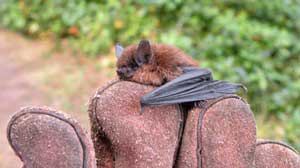— Submitted by Kwiaht
Kwiaht, the center for the historical ecology of the Salish Sea, has announced results of the first systematic survey of the county’s bats in 75 years.
San Juan County is full of bats and Orcas Island is the battiest island of all.
The study included 105 nights of ultrasound recordings, visits to homes and barns where bats were reported roosting, and visual observations, including dead or injured bats received by Wolf Hollow Wildlife Rehabilitation Center.
“Over ten thousand bats were heard,” Kiwaht director Russel Barsh said, “and that is only perhaps one percent of what’s out there.”
The most bat flyovers per hour were heard above lakes and ponds on Orcas.
There are 15 known species of bats in Washington and nine species were identified by acoustic analysis on Lopez, Orcas and San Juan islands. The nine species identified appeared in different proportions, which is attributed to the difference in habitats that are available on each island.
“For example,” Barsh said, “Yuma Myotis, which like to hunt over open water, were more abundant on Lopez, while California Myotis, which seem to prefer to hunt wooded areas, were more abundant on Orcas.”
A tenth species, Keen’s Mytosis, is probably present on the islands but needs to be confirmed through genetic testing.
The Kwiaht study also confirmed that San Juan County is an important reservoir of Townsend’s Big-Eared Bat, a federal and state species of concern found at only a dozen maternity roosts in Washington. Townsends were identified on four islands.
The reason for their relative abundance in San Juan County remains unclear. Good new for farmers, this species of bat specializes in eating moths, especially those detrimental to orchards.
The Kwiaht study also confirmed that many species of bats remain in the islands over the winter, dispersing locally rather than migrating to the mainland or hibernating. As studies continue next year, the focus will be the dispersal pattern of winter bats and what they are eating.
The American Wildlife Conservation Foundation helped fund the study of bats and the results have been submitted for publication.



